Learn what to do if your hard disk, SSD, thumb drives, or other USB devices aren’t connecting to your Mac and you can’t use them as expected.
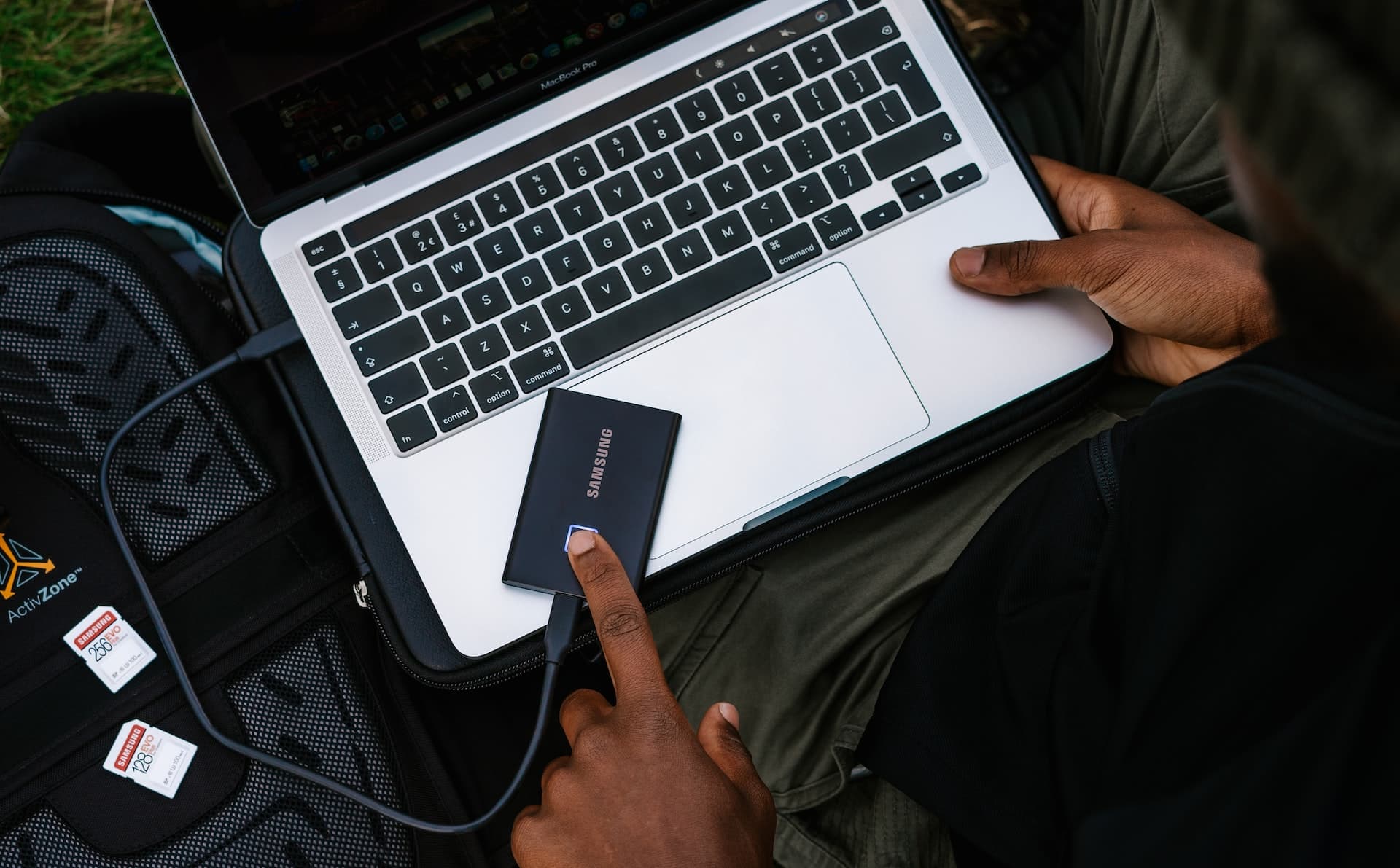
When you connect an external hard drive, SSD, GPU, camera, iPhone, iPad, Android phone, flash drive, or other device to your Mac’s USB port, it may disconnect and fail to appear in Finder, on the desktop, or in the relevant app. Multiple instances of a USB device connecting and immediately disconnecting can lead to device failure, data corruption, or permanent data loss.
Follow these tips to fix the issue.
How to connect USB devices to Mac
Before we get to the solutions, let’s first discuss how different devices connect to your Apple computer
iPhone, iPad, and iPod
- Connect your device to your Mac using an appropriate cable.
- Open Finder and click your iPhone, iPad, or iPod name from the left sidebar.
- Click Trust if you see it. Next, unlock your iOS device, tap Trust, and authenticate.
- Your iPhone, iPad, or iPod are now connected to your Mac and visible inside Finder. Going forward, you can also see your iOS device in Music, TV, and third-party apps like coconutBattery to know when the phone was manufactured.
Android phone
Previously, you could use the simple Android File Transfer app to access your Android phone on your Mac and exchange music, videos, photos, files, etc. However, Google has retired this software and removed it from its website. If you are super interested, you can still download the Android File Transfer app using this Google link.
To connect your Android phone now, just plug it into your Mac and select File Transfer from the notification pane. Your Android phone should appear on your Mac as a regular external hard drive.
SD Card, flash drive, external hard drive, or SSD
- Use an appropriate cable to connect your device to your Mac.
- Open Finder and you should see the external drive in the Finder sidebar or desktop. If not, follow the solutions below. Note: Some external SSDs, like the Samsung T7 Touch, have fingerprint security. Make sure you authenticate before trying to use it on Mac.
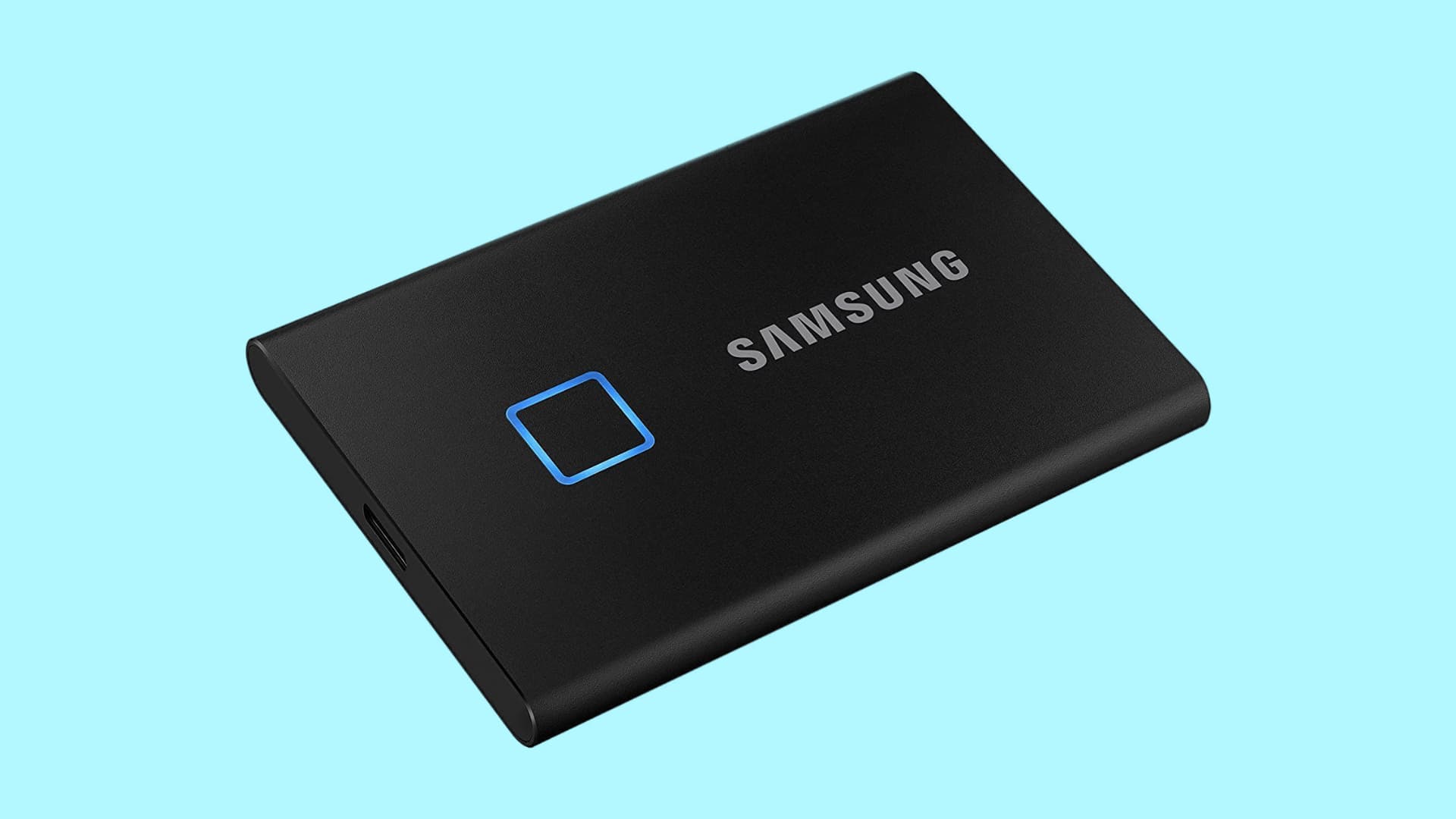
Why USB devices are not connecting to your Mac
External devices may repeatedly disconnect or fail to appear on your Mac due to software or hardware issues, compatibility problems, power shortages, and more.
Software issues can involve bugs in macOS or driver problems with external devices. Hardware issues may include a damaged USB port pin, broken cables, or unnecessary movement.
Power shortages occur when your external drive isn’t receiving enough power to function properly, causing it to struggle, repeatedly disconnect, or not show up at all.
How to fix USB devices not connecting or disconnecting automatically
Make sure you follow the solutions per the device you’re trying to use with your Mac.
1. Ensure external devices show in Finder and on desktop
- Open Finder and click Finder > Settings or Preferences from the top menu bar.
- From the General section, check the boxes for External disks and CDs, DVDs and iPods to allow them to show on your Mac’s desktop.
- Next, go to the Sidebar section. Under the Locations heading, check External disks and CDs, DVDs, and iOS Devices. After this, the devices you connect to your Mac will show in Finder.
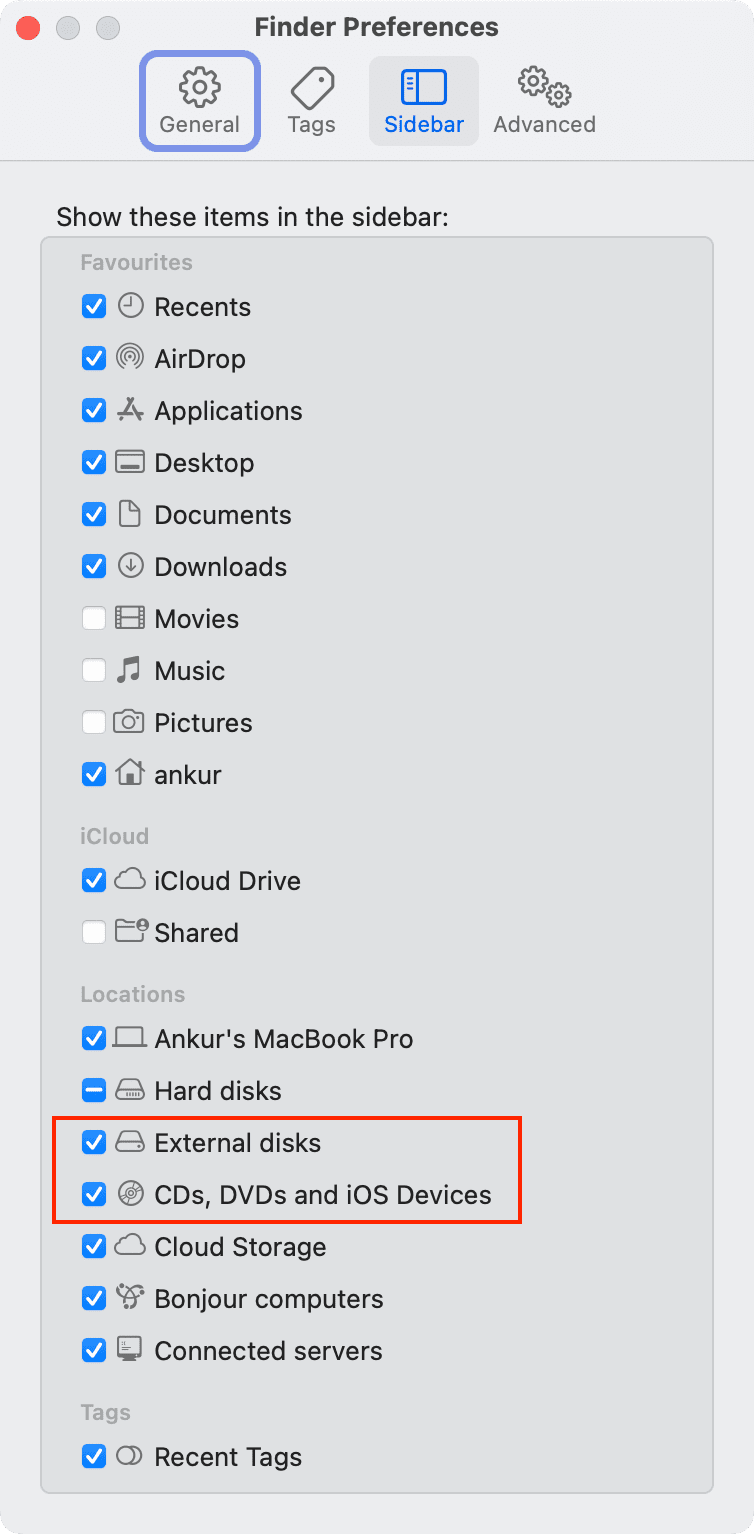
2. Check if the device is connected
Before moving to the next fixes, it’s essential to know whether the device is connected to your Mac or not.
- Connect the external USB drive or device to your Mac. It’s ok if you don’t get a visual confirmation.
- While holding the Option key, click the Apple icon () and choose System Information.
- Choose Storage from the left sidebar.
- Here, if you see the external drive, that means the device is connected to your Mac, but because of software issues, it’s unusable. In this case, the solutions below should help. You may skip the four solutions immediately after this heading.
- However, if the external drive isn’t showing here, make sure you follow the solution here carefully, including the four mentioned just below this screenshot.
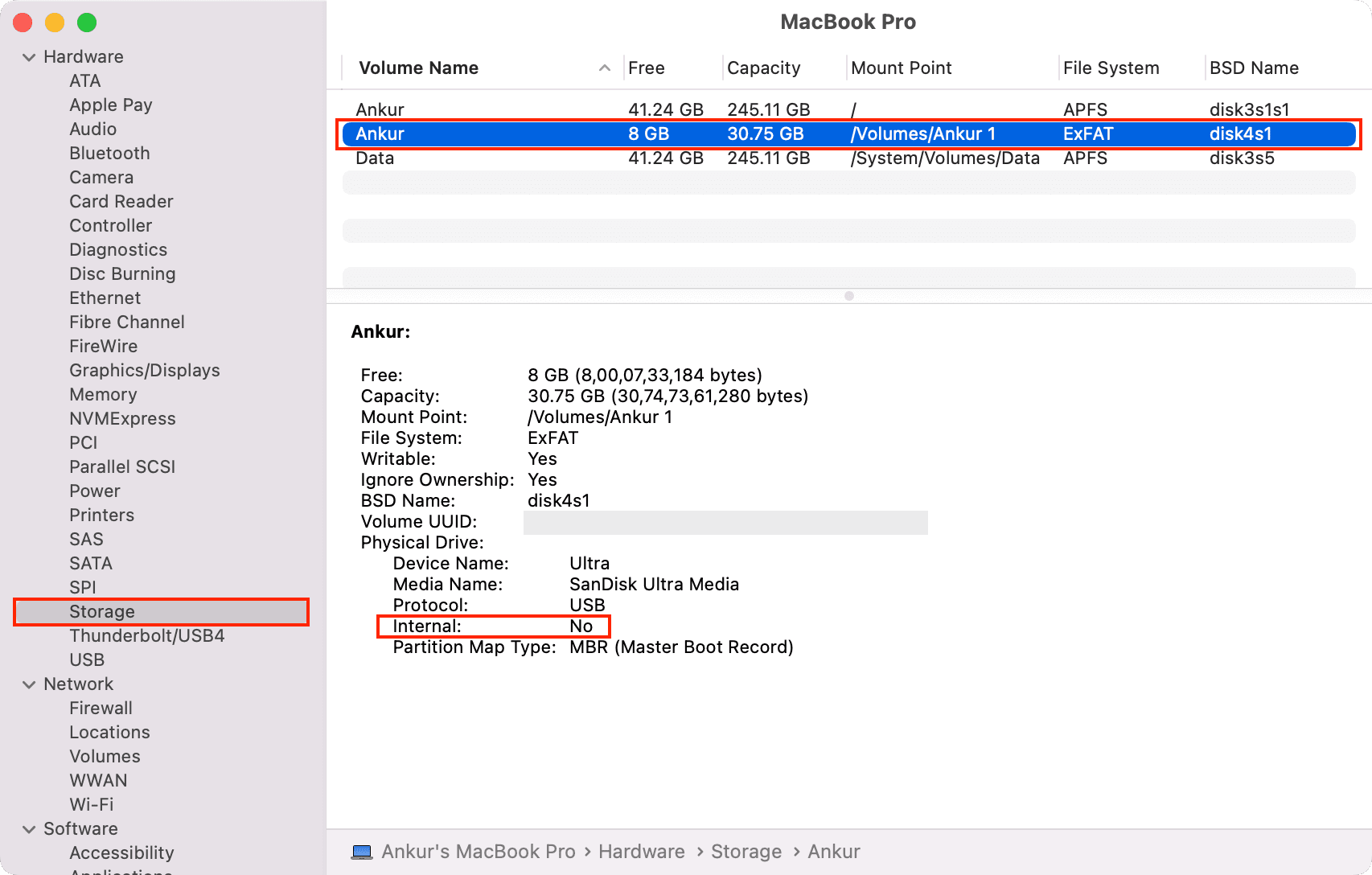
3. Check all physical connections and try different ports
This is pretty basic but essential. Make sure you try different ports of your Mac or USB-C dongle. Next, focus on the connection points and ensure everything is secure. In some cases, disconnecting other USB devices and connecting just one may do the trick.
4. Keep the USB device and Mac on a stable surface
Some people tend to hold their phone or USB device while it’s connected to the Mac. Avoid doing that! Instead, keep both your Mac and the connected USB device on a table or hard surface, and refrain from moving them around. Often, the wired connection isn’t perfect at the joints and can disconnect with even the slightest movement.
5. Clean the USB ports
Are your Mac’s USB ports filled with dust and debris? If so, use a soft dry cloth or Q-tip to carefully clean the ports. Afterward, try reconnecting the device.
6. Check the USB-C dongle and ensure it isn’t too hot
Before moving forward, make sure the dongle isn’t excessively hot. If it is, the device may not show up on your Mac. To resolve this, simply disconnect the USB-C hub and allow it to cool down.
7. Quit all Mac apps
In rare cases, an open app may prevent an external device from showing up on your Mac. To remedy this, save your ongoing work in all open apps and follow these steps.
- Press Command + Option + esc keys.
- Press Command + A to select all open apps.
- Click Force Quit.
- Once that’s done, reconnect the USB device and see if it connects to your Mac or not.
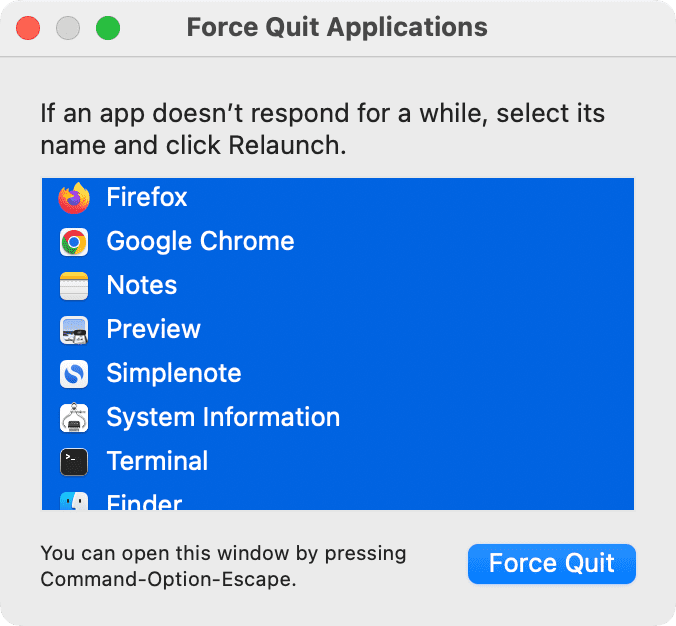
8. Restart your Mac
When things aren’t working as they should, restarting is a reliable and time-tested solution. Click the Apple icon () and select Restart. Afterward, unplug and re-plug the USB device into your Mac.
9. Restart the external device (if applicable)
If the device you’re trying to connect can be restarted (like a smartphone), make sure you do that. Obviously, this solution won’t apply to thumb sticks, SSDs, etc.
10. Turn off Low Power Mode and other energy-saving options on Mac
Some external USB devices may not get sufficient power from your Mac if it’s in Low Power Mode or other power-saving modes. To address this, turn off Low Power Mode.
If you’re using a third-party battery-saving app for Mac, quit that as well.
Finally, if things still don’t work, connect your MacBook to its charger while trying to use a USB device. Additionally, if the USB device, like an external GPU, has its own power input, make sure it’s plugged into a power outlet.
11. Ensure the drive is formatted to work with macOS
Not all hard drives, SSDs, pen drives, and storage devices will work on Mac. Some may not even appear as a valid drive, while other formats may only offer read-only permissions and prevent you from adding new data to the drive. To address this, erase and format external disks on your Mac to a suitable format.
Also see: How to make a USB drive work with both Mac and Windows PC
12. Run First Aid and repair disk in Disk Utility
If the storage device is connected to your Mac but displays errors, try using Disk Utility to fix the issue.
- Open Disk Utility, which comes pre-installed on all Macs.
- Select your USB drive from the left sidebar.
- Click First Aid.
- Click Run. Disk Utility will now check the drive for errors and fix them if within its capability.
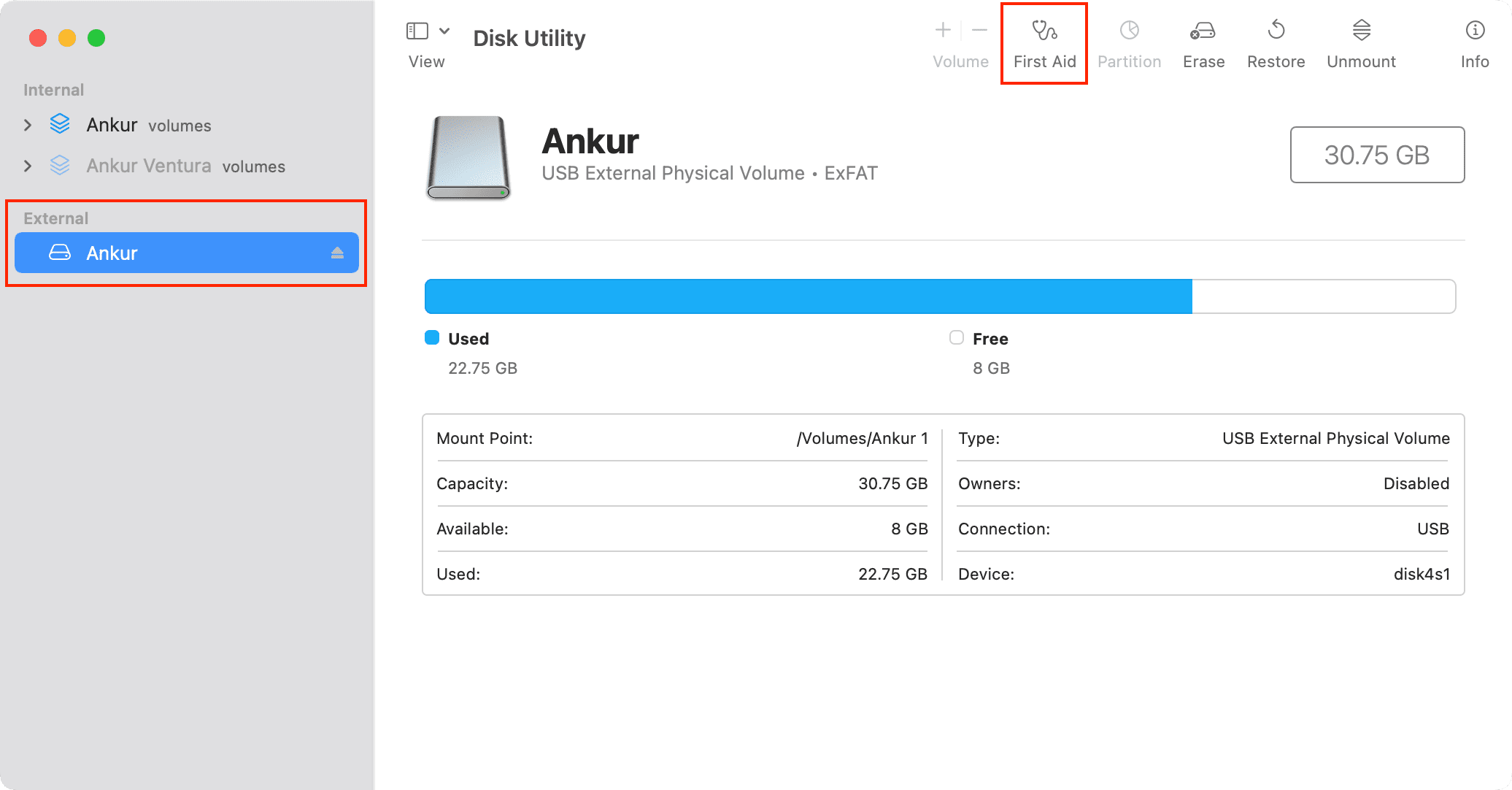
13. Reset location and privacy settings if iPhone or iPad doesn’t connect
If you can’t connect your iPhone or iPad to your Mac, go to iOS Settings app > General > Transfer or Reset iPhone > Reset and pick Reset Location & Privacy. Next, reconnect your iPhone to your Mac, select it from the Finder sidebar, and trust it.
If the problem continues, check out these 15 solutions to fix iPhone not showing up in Finder on Mac.
14. Test the external device on another computer
If you are still experiencing issues, try using the external drive with another Mac. If the drive works, we can conclude that the problem is exclusive to your Mac.
15. Update the relevant application
An external USB device may only appear in certain applications on your Mac. For example, many Android phones might not show up as storage devices in Finder but can be accessed through the Android File Transfer app or similar apps. Ensure these apps are updated so they can properly recognize the USB device and make it usable.
16. Stop usbd process
If the USB connection problems still remain, try stopping the usbd process using Terminal. This may cause your connected device, such as an iPhone, to charge slowly via your Mac, but it will ensure reliable connectivity and prevent the device from disconnecting automatically.
Open Terminal and paste the following command:
sudo killall -STOP -c usbd
Next, hit the return/enter key and type your Mac’s password. Unplug and re-plug the USB device and see if it works.
Once you’re done with your work or if the above command didn’t change anything, follow the same steps, but this time, use this command to continue the usbd process:
sudo killall -CONT -c usbd
17. Try connecting the USB device in Safe mode
Were you able to connect USB devices to your Mac previously, but can’t seem to do so lately? If so, try starting your Mac in Safe mode and connect the USB device. If it works in Safe mode, it’s likely that a recently installed application or program is causing issues with external devices. You can fix this by deleting the apps you recently installed on your Mac.
18. Update your Mac
If your computer is running an older version of macOS, go to its settings to install the latest available macOS build for your computer.
19. Reset SMC and NVRAM/PRAM
Finally, if none of the above solutions work, try resetting the SMC and NVRAM/PRAM on your Mac. Performing these tasks isn’t complex, and our tutorials will guide you through the process. Once you reset the SMC and NVRAM/PRAM, external USB devices should connect and work perfectly on your Mac.
Check out next: